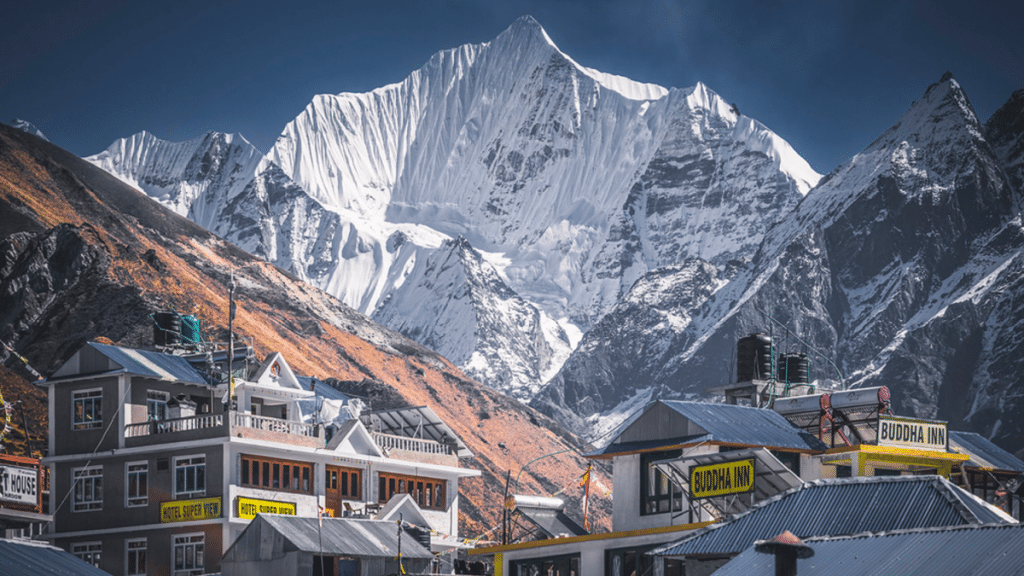Nepal, the proud owner of the majestic Himalayan landscape, is a haven for trekking and adventure enthusiasts. Nepal is home to some of the best trekking peaks of Nepal, i.e., peaks over 6000m, that provide the ideal challenge for trekkers willing to try their hand at high-altitude mountaineering. The trekking sites offer the ideal mix of exciting climbs and scenic beauty, suitable for those who want a mix of nature and adventure.
The path to these Nepal trekking peaks passes through varied landscapes, from beautiful forests and isolated valleys to glacial trails and rocky ridges. These peaks are less extreme than the 8000m peaks and can be climbed by climbers with a little climbing experience, providing a great mountaineering experience without excessive technical difficulty.
Nepal climbing peaks recognized by the Nepal Mountaineering Association (NMA) offer a chance to climb the Himalayas with training, guide, and permit. Every climb offers a different challenge of willpower and endurance and an experience to cherish amidst the world’s highest mountains.
And for the adventure-seekers, Nepal’s highest trekking peaks provide an experience not to be missed. For inexperienced mountaineers and mountaineers seeking a different type of challenge, these high-altitude treks are guaranteed to provide an unforgettable and thrilling Himalayan experience.
1. Mera Peak
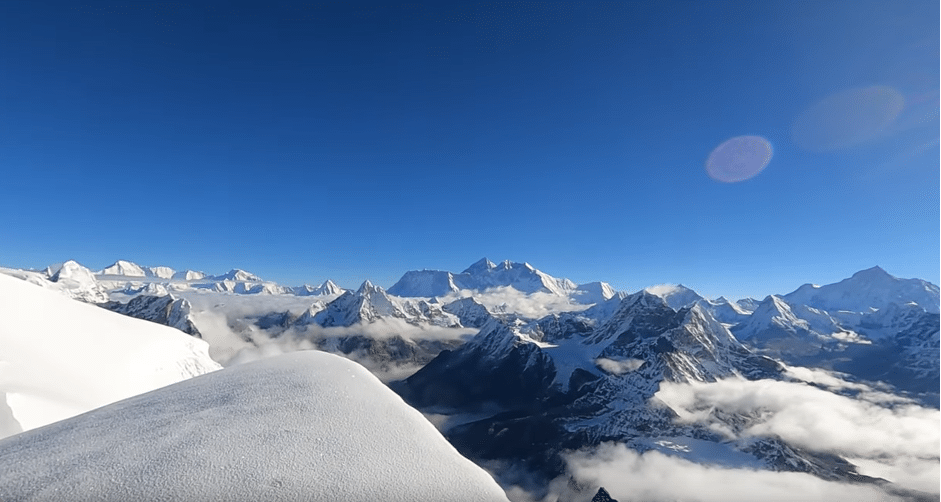
Mera Peak (6,476m) is one of the more sought-after trekking peaks in Nepal, offering a thrilling Himalayan experience. As the highest permitted trekking peak, Mera Peak attracts climbers who want to experience high-altitude climbing with relatively less technical difficulty.
Located in the Everest region, Mera Peak provides breathtaking views of five 8000m giants: Everest, Lhotse, Makalu, Cho Oyu, and Kanchenjunga. Climbing Mera Peak offers an excellent opportunity to witness the Himalayas at their finest while trying a less technical climb compared to other peaks.
Duration:
The typical Mera Peak trek takes 15-18 days inclusive of acclimatization and trekking to picturesque Sherpa villages, rhododendron valleys, and glacial landscapes.
Grade
Mera Peak is a challenging to tough trekking peak. While requiring immense physical endurance, the technical ascent involved is zero and therefore ideal for adventure enthusiasts with a wish to attempt mountaineering.
Highlights
Mera Peak, the highest trekking peak in Nepal at 6,476m, offers a special Himalayan experience that appeals to adventure enthusiasts from around the world. The summit offers stunning views of Everest, Lhotse, Makalu, Cho Oyu, and Kanchenjunga, some of the tallest mountains in the world.
The trek itself is varied, taking climbers into the isolated Hinku Valley, glaciers, and high-altitude passes, with a mix of spectacular views along the way. With its relatively easy trip, Mera Peak climbing offers a great option for inexperienced mountaineers who want an adventurous yet viable high-altitude trek.
Such a combination of scenic beauty, diversified trekking trails, and ease of accessibility helps make Mera Peak one of the highly sought-after trekking peaks of Nepal.
2. Chulu West Peak

Chulu West Peak (6,419m) is one of the best trekking peaks in Nepal and is in high demand with climbers for a harsh yet achievable climbing adventure. In Annapurna district, it is perfect combination of trek and climb inviting adventure lovers to witness the enormity of Himalayas. Climbing to its summit is exhilarating adventure of changing landscapes from alpine grassy meadows and forests to ridge and glacial landscape.
Duration and Grade
The average time to ascend Chulu West is 18-21 days with acclimatization and Annapurna Circuit trekking. Climbing is strenuous to challenging, best suited for experienced climbers with trekking experience and physical fitness.
Glaciers must be traversed, rocky scrambles along steep rock faces, and pitches where fixed ropes must be utilized, hence making it a bit technical from some other Nepal trekking peaks. Nevertheless, with adequate training and guidance, most climbers can.
Highlights
Chulu West is renowned for providing spectacular views of the Annapurna massif, Dhaulagiri, and Manaslu ranges. The rock climb is a good introduction to high-altitude climbing, with open exposure and diverse scenery en route. It’s an excellent peak for climbers to acclimatize to first before taking on more demanding Himalayan expeditions.
The combination of its technical challenge, scenic views, and accessibility makes it one of the finest trekking peaks in Nepal for adventure within the core of Annapurna.
3. Lobuche East Peak
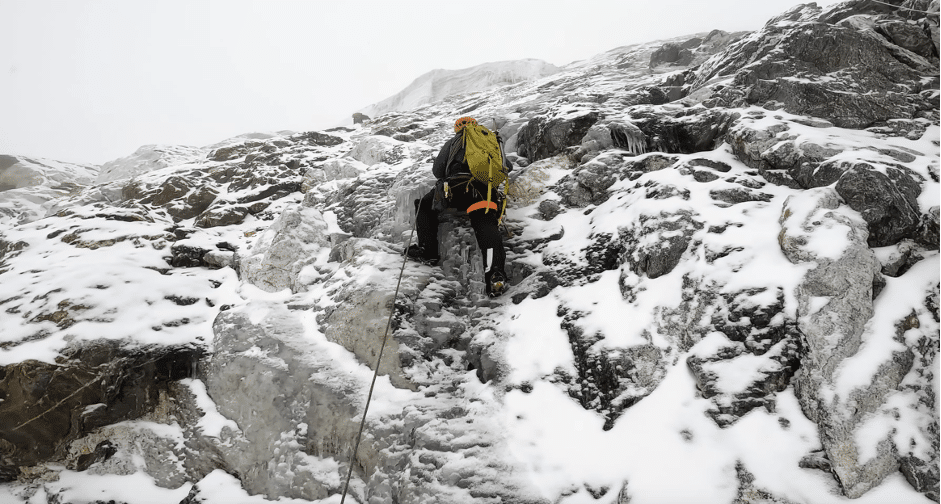
Lobuche East Peak (6,119m) is one of the most sought-after trekking peaks of Nepal, located in the Everest region. Renowned for its spectacular landscape and technical climb, it gives adventure seekers an opportunity to experience a mountaineering adventure in the higher Himalayas.
The ascent to the top combines the excitement of glacier travel and rock climbing, and offers veteran climbers a challenging but rewarding experience. It’s the ideal choice for adventure seekers who want to test their limits while navigating the stunning landscape that surrounds Everest.
Duration and Grade
The time to ascend Lobuche East requires approximately 16-18 days, inclusive of acclimatization days and trekking over the classic routes of the Everest region. Climbing is difficult to hard and includes technical forms of climbing such as using ice axes and crampons.
Even though it is more difficult compared to easy trekking summits, it is still achievable by experienced trekking individuals in good physical condition. Being one of the more technical of Nepal’s trekking peaks, Lobuche East provides a good warm-up for climbs of the higher Himalayas.
Highlights
Lobuche East is best for its simply spectacular views of Everest, Lhotse, Nuptse, and Ama Dablam, with one fantastic panorama blending into another. The climb places the climbers in the midst of rugged and made-up of glacier fields, steepening slopes, and rock ridges, and thus is a ride-full and mixed climb. Among Nepal’s most prized trekking peaks, Lobuche East is well suited to those who want a challenging but affable Himalayan trek
4. Pisang Peak
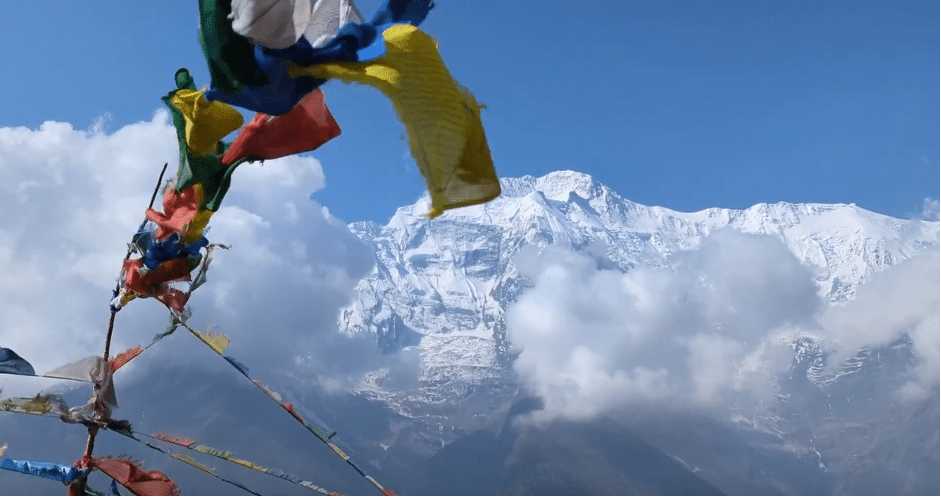
Pisang Peak (6,091m) is one of Nepal’s most sacred trekking peaks in the Annapurna region. It is an ideal option for adventure lovers that want to experiment with treks and climbing alike. The peak is a behemoth with a distinctive shape, a giant thumb, and relatively less technical climb, which is why it becomes a preferred climbing destination for trekkers and climbers with a little background experience of trekking and high altitude.
The climb to the summit provides great scenery of the Annapurna summits, which is why it is enticing to tourists who desire to see the Himalayas.
Duration and Grade
Ascent of Pisang Peak typically takes 14-18 days of trekking and acclimatization in varied Annapurna country. The climb is rated as moderate, ideal for seasoned trekkers in good physical condition.
It is a climb with technical aspects like glacier travel and fixed rope use, but not as physically demanding as some of the more demanding trekking peaks, so it is an ideal choice for an individual seeking a demanding but manageable climb.
Highlights
Pisang Peak has breathtaking vistas of Annapurna, Dhaulagiri, and the Manaslu range that form a magnificent backdrop to the trek. The climbing itself has some thrilling portions of rock and ice climbing, and therefore it is a serious mountaineering expedition.
Pisang Peak is one of Nepal’s most popular trekking peaks and provides a fine combination of trekking and technical climbing and is therefore one of the preferred destinations for adventure lovers.
5. Island Peak
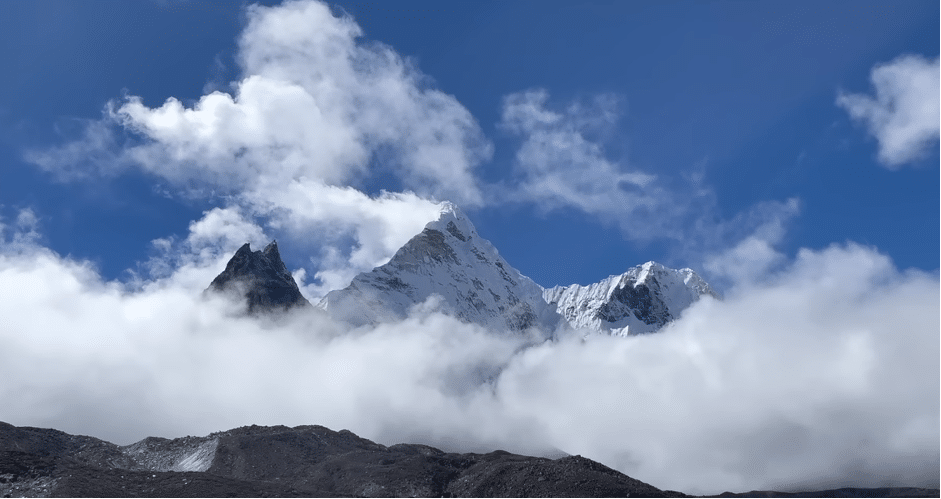
Island Peak (6,189m) or Imja Tse is a very popular trekking peak of Nepal offering adventure lovers a challenging high-altitude trek. Located in the Everest region, it is a wonderful way to experience mountaineering with a combination of trekking and technical climbing. Climbers can choose this peak for Himalaya climbing without confronting the extreme heights of 8000m peaks.
Duration:
The normal ascent is 14-18 days, including acclimatization days and trekking in scenic Sherpa villages, glaciers, and rough Himalayan country.
Grade:
It is moderate too difficult in grade with a minimum of technical climbing. Trekking and physical fitness enthusiasts can overcome this trekking peak of Nepal with appropriate planning.
Highlights
This popular trekking peak is one of the most sought-after trekking peaks to be ascended in Nepal, offering a tough mountaineering experience to adventure seekers. At 6,189m, it rewards climbers with the pleasure of magnificent vistas of Everest, Lhotse, Nuptse, and Ama Dablam from the summit, rendering the climb simply unforgettable.
Island peak climbing with EBC is another great option to explore both Everest base camp and Island peak in the trip. The climb provides a technical but accessible climb, with glacier traverses, rope passages, and ice climbing, providing the trek a fast-paced technical spin. These are additional reasons why this Peak is a highly recommended choice for adventurers wanting to gain mountaineering experience before they start higher Himalayan ascents.
With its stunning vistas, thrilling climb routes, and acclimatization, it is one of the top-ranking destinations among Nepalese trekking peaks that attract beginner climbers as well as seasoned mountaineers.
Conclusion
For adventure seekers, Nepal’s trekking peaks offer some of the most thrilling and fulfilling experiences on the planet.
With Mera Peak’s grandeur and Island Peak’s technical challenge, the peaks offer a unique chance to merge trekking and climbing in one of the planet’s most beautiful places. Nepal’s wide array of trekking peaks offers something for every type of climber, from someone who desires a less challenging climb such as Pisang Peak to a more complex expedition like Chulu West and Lobuche East.
What is so remarkable about trekking peaks in Nepal is not so much the physical accomplishment, but the dramatic landscapes and cultural adrenaline of arrival. Trekkers hike along paths through remote valleys, Sherpa villages of color, and medieval monasteries, surrounded by the region’s rich heritage.
From the breathtaking Himalayan scenery to the excitement of summit day to the pure sense of achievement standing on top of a peak, Nepal trekking peaks provide an experience second to none.
And for the adventure lovers, Nepal’s trekking peaks offer a great mix of adventure, challenge, and nature, with Nepal being one of the most favored destinations for all those who would want to test their limits and behold the Himalayan beauty.
